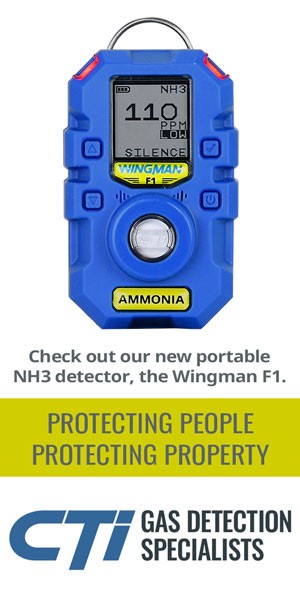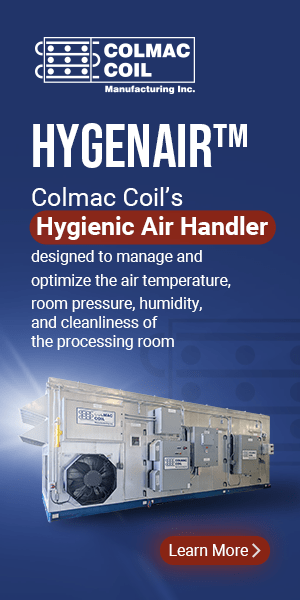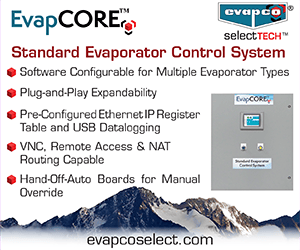Dealing With Conflicting Codes and Standards
Although much effort goes into coordinating various documents that regulate ammonia refrigeration systems, perfect harmony isn’t achievable for a variety of reasons. Anyone who designs or operates facilities that utilize ammonia refrigeration knows that we deal with a lot of codes and standards. These include IIAR-2; ASHRAE 15; the International fi re, building and mechanical codes; the NFPA building and fi re codes; and the Uniform Mechanical Code. For a little more complexity, tack on federal regulations promulgated by OSHA and EPA
IIAR’s efforts to achieve consistency among regulations face two significant obstacles. First, the different “families” of model codes and standards (IIAR, ASHRAE, International Code Council, National Fire Protection Association and International Association of Plumbing and Mechanical Officials) and federal regulations are all developed using different processes. It’s not uncommon for these different processes to yield different results even when the initial text of recommended changes may have been the same.
Likewise, each code and standard development process involves different individuals and organizations in the decision-making that determines the final regulations. Because these individuals, their experiences and the perspectives that they represent differ, regulations that they generate will differ as well.
On occasion, designers will encounter situations where they are expected to comply with multiple regulations from different documents that are not consistent. In addition, you can sometimes encounter situations where different sections of the same code specify different requirements. When that happens, it can be a source of frustration trying to decide how to satisfy the competing requirements, so here is some guidance to consider.
Let’s start at the top. Federal law trumps all other laws and regulations, and federal fines can be orders of magnitude higher than local fines. However, in the case of EPA and OSHA regulations, these regulations tend to focus on facility operation rather than initial design. Accordingly, conflicts with Federal law don’t tend to be an issue for initial design of a facility, and the focus for design will be compliance with local building, fire and mechanical codes and industry design standards, such as IIAR 2. So, how do you deal with conflicts among these documents?
Contrary to popular belief, the answer to that question is NOT “follow the most restrictive requirement.” Instead, there are two general rules, 1) codes trump standards, and 2) within a single code, specifi c trumps general. These two rules are specifically spelled out in all model code documents, which are typically adopted as the basis of regulating design and construction of buildings and refrigeration equipment by state and local jurisdictions.
As an example of the text that specifies how to deal with conflicts, the 2012 International Fire Code states in Section 102.7.1: “Where conflicts occur between provisions of this code and referenced codes and standards, the provisions of this code shall apply.” This text makes it clear that it is the intent of the code that any requirement in code text supersedes whatever may be required by a referenced standard, such as IIAR-2, even if you believe that the referenced standard is “right” and the code is “wrong.” The IFC also states in Section 102.10:
“Where there is a conflict between a general requirement and a specific requirement, the specific requirement shall be applicable. Where, in a specific case, different sections of this code specify different materials, methods of construction or other requirements, the most restrictive shall govern.”
Other codes in the International code family include provisions that reflect the same approach as shown above.
The provisions in Section 102.10 may seem a little confusing at first, but if you read them closely, what they tell you is, where there is a legitimate conflict between two sections of the same code, in this case the IFC, you follow the requirement that most specifically applies to the situation at hand. The second sentence tells you that, if there is no clear specific vs. general requirement, you follow the more restrictive provision.
You might be asking at this point, how is it possible that two sections of the same code end up conflicting with one another? I’ve personally seen this happen in cases where someone proposed a new requirement to deal with something that was already handled elsewhere in the code. If nobody happens to notice the conflict during the code development process, it ends up in the code. Fixing such an issue, assuming that it gets noticed, requires someone to submit a new code change proposal to the next edition. Sometimes that happens, sometimes not.
It’s also worth mentioning that, in some cases, you may find two sections of a code include different requirements, but they don’t necessarily conflict or have a clear “specific over general” relationship. I typically view a conflict as an inability to simultaneously apply equal requirements. Where requirements from different code sections can be simultaneously applied, consider whether it’s more appropriate to satisfy both requirements vs. handling the situation as a conflict.
Like the International codes, NFPA codes, such as NFPA 1 Fire Code, and the Uniform Mechanical Code establish nearly identical provisions to those discussed above. In the case of NFPA 1 Fire Code, the issue of conflicts between codes and standards is addressed in Section 1.3.3. In the Uniform Mechanical Code, the issue is handled in Section 101.3.1.
ASHRAE 15, as a referenced standard, is pretty well correlated with the model code approach. It provides a specific deferral to codes vs. ASHRAE 15 in Section 12, as follows:
“Where there is a conflict between this standard and local building, electrical, fire, mechanical, or other adopted codes, their provisions shall take precedence unless otherwise stated in those codes.”
The next edition of IIAR 2 will likely have similar text.
Of course, there may be cases where following the prescriptive rules for handling conflicts described above don’t work well in the opinion of the designer, and for those cases, you always have the option of proposing an alternative method of compliance or a code modification. For advice on how alternate methods and code modifications work and how to propose them, you can review my previous article in the August 2008 Condenser.












